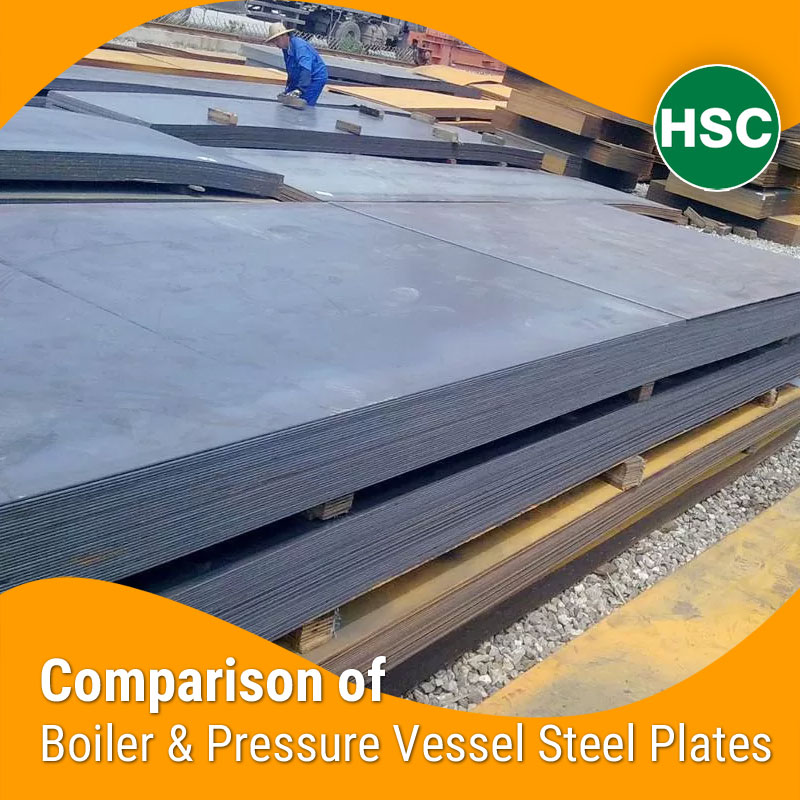A516 Grade 60 vs Grade 70 – A Quick Introduction
ASTM A516 is a widely used pressure vessel steel plate standard for moderate- to lower-temperature service. Among its four grades—Grade 55, 60, 65, and 70—Gr 60 and Gr 70 are the most commonly used. But what’s the real difference between A516 Gr 60 and Gr 70?
What Is A516 Grade 60?
A516 Gr 60 is a carbon steel plate with a minimum yield strength of 32 ksi (220 MPa) and tensile strength of 60-80 ksi (415–550 MPa). It is suitable for medium-pressure applications like storage tanks, LPG vessels, and reactors.
What Is A516 Grade 70?
A516 Gr 70 is a stronger variant, offering a higher tensile strength of 70–90 ksi (485–620 MPa) and yield strength of 38 ksi (260 MPa). It is ideal for high-pressure boilers, heat exchangers, and petrochemical vessels.
Comparison Table: Gr 60 vs Gr 70
| Property | A516 Gr 60 | A516 Gr 70 |
|---|---|---|
| Yield Strength (min) | 220 MPa | 260 MPa |
| Tensile Strength | 415–550 MPa | 485–620 MPa |
| Impact Resistance | Good | Higher than Gr 60 |
| Application | Moderate pressure | High pressure vessels |
| Cost | Slightly lower | Slightly higher |
Which Grade Is Best for Boilers and Pressure Vessels?
- Grade 70 is preferred for high-pressure and critical load-bearing structures
- Grade 60 is used in non-critical pressure environments like LPG cylinders, small storage tanks
Weldability and Fabrication Differences
- Both grades are fully weldable, but Gr 60 is more forgiving during welding due to lower carbon content.
- Gr 70, with higher strength, may require more precise preheat/post-heat treatments in thicker sections.
Thickness Availability
- Gr 60: 6mm to 150mm
- Gr 70: 6mm to 200mm
Both are available in as-rolled and normalized conditions as per ASME/ASTM requirements.
Heat Treatment Differences
- Gr 60: Usually delivered as-rolled or normalized
- Gr 70: Often normalized for improved mechanical properties, especially in thicker gauges
Code & Specification Compliance
Both conform to:
- ASTM A516 / ASME SA516
- NACE MR0103 / MR0175 (on request)
- EN 10028 equivalents (P265GH, P295GH, etc.)
Which Grade Should You Choose?
Choose Gr 70 when:
- Operating pressure is high
- Temperature resistance and mechanical strength are critical
Choose Gr 60 when: - Project cost is a key factor
- Design doesn’t require highest tensile levels
Export Demand: Which Grade Is More Popular Globally?
A516 Gr 70 is more in demand internationally, especially in:
- Middle East: for oil refineries
- Africa: for power plant construction
- Southeast Asia: for pressure equipment manufacturing
Gr 60, however, is exported for budget-sensitive projects or replacement works.
Buyer Tips for Material Selection
- For thicker plates (>40 mm), prefer Gr 70 Normalized
- If NACE/HIC compliance is required, both grades can be supplied HIC-tested
- Specify impact tested at -20°C for offshore or cold-climate use
Certifications Provided
- EN 10204 3.1 / 3.2 MTC
- IBR Certificate (India)
- CE / PED marking on request
- NABL-tested impact & chemical report
Stock Availability at Hindustan Steel Corporation
- Ready stock of Gr 60 and Gr 70 up to 150 mm thick
- Custom-cut sizes available within 72 hours
- Full export documentation with HS Code 7225.40
FAQs for A516 Gr 60 vs Gr 70
Is A516 Gr 70 stronger than Gr 60?
Yes, Gr 70 has higher tensile and yield strength.
Can both be used for the same project?
Yes, but Gr 70 is better for higher-pressure parts. Mix usage should follow design codes.
Are both grades available with HIC or NACE testing?
Yes, HIC/NACE-tested plates are available for both grades.
What’s the price difference between Gr 60 and Gr 70?
Gr 70 is marginally more expensive (~5–8%) due to higher alloying content and demand.
Which one is more readily available?
Gr 70 is more commonly stocked due to global demand.

